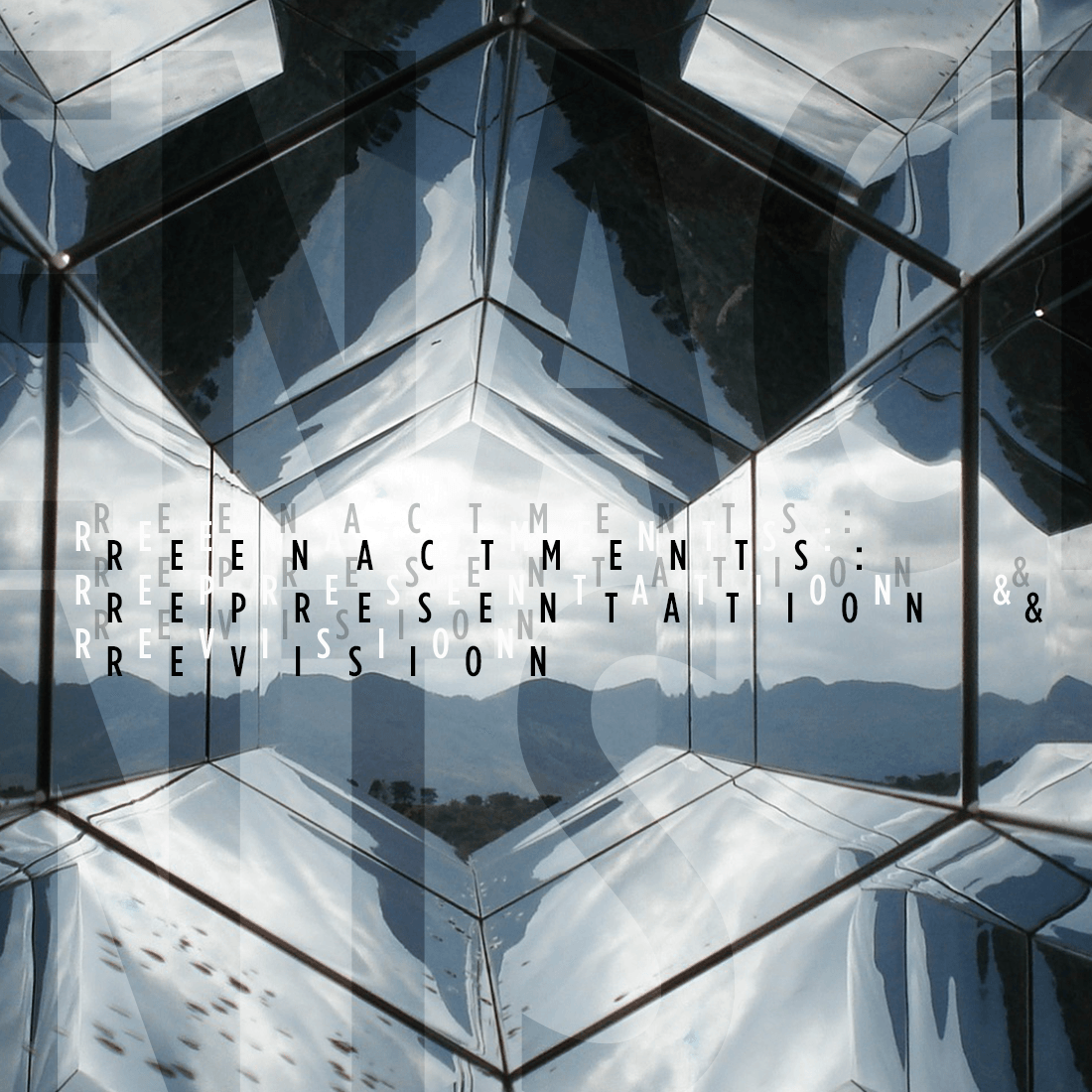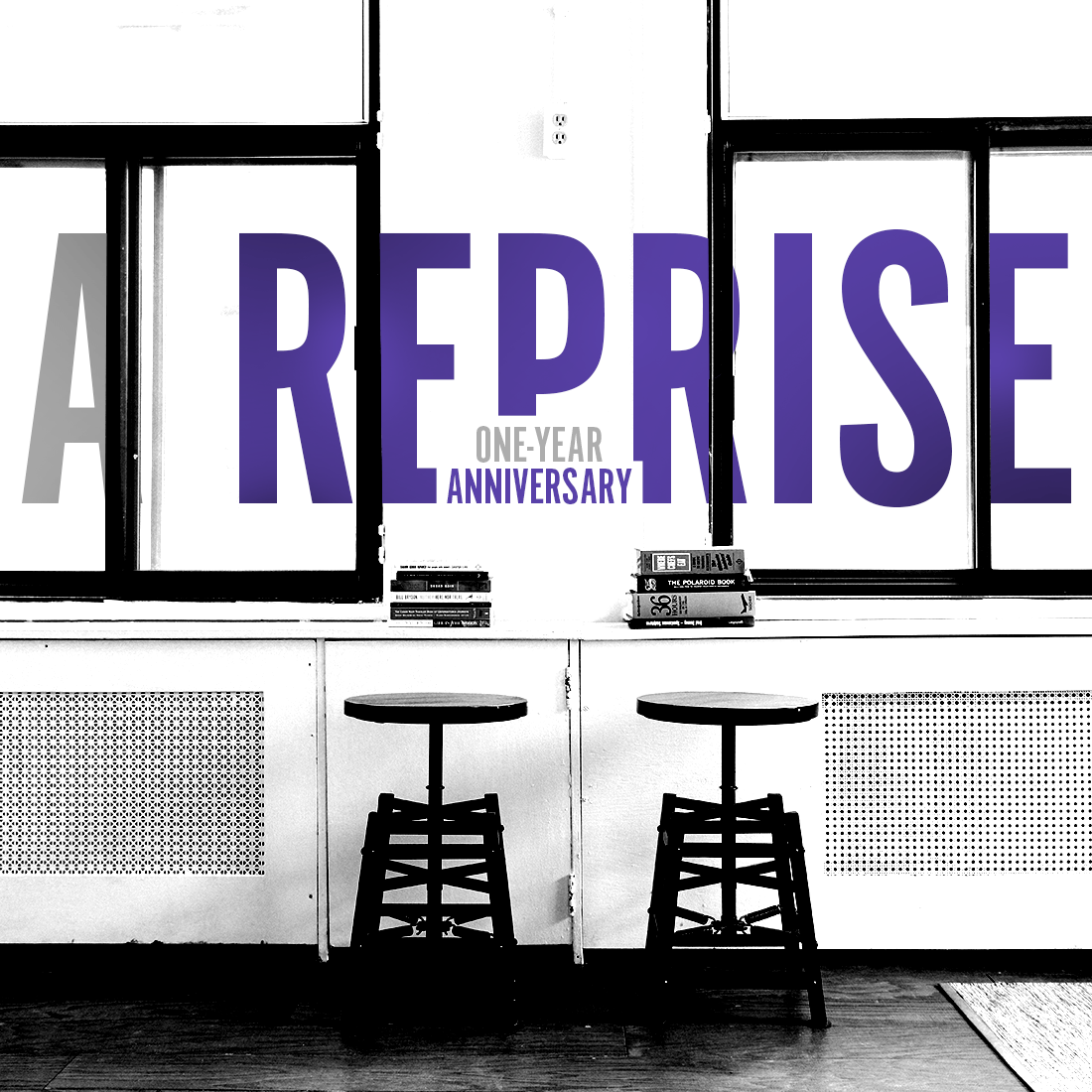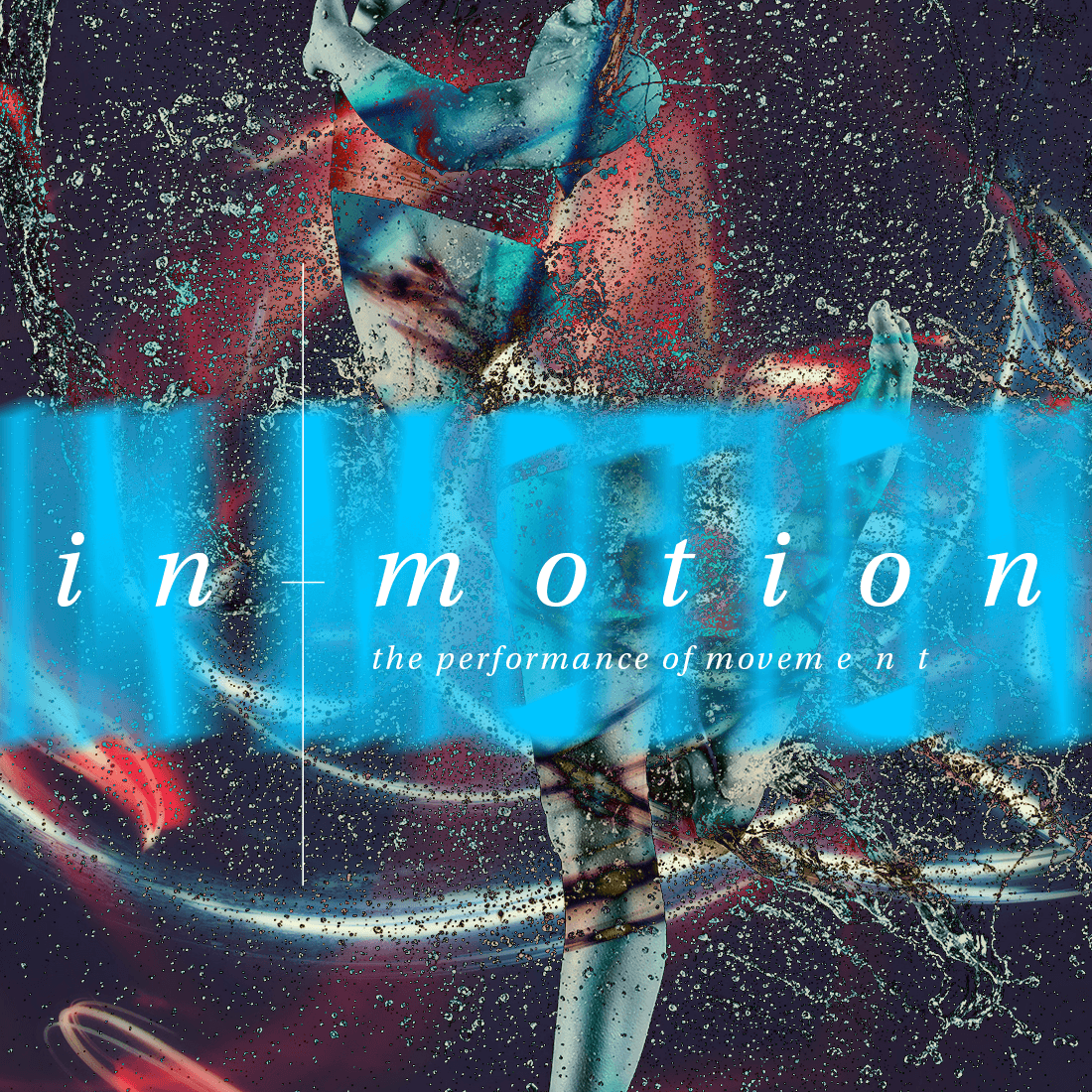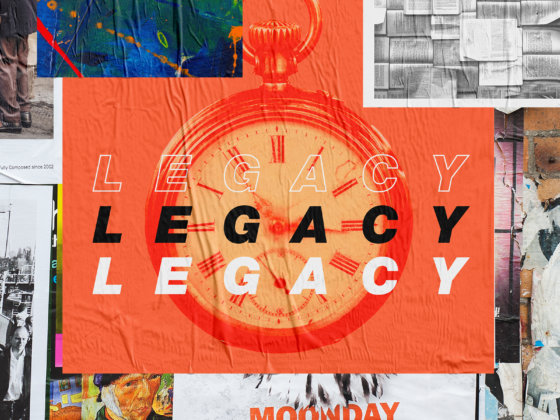NATALIE GALLAGHER & SWEDIAN LIE
In the current American political landscape, one might suggest that, as the state of U.S. politics shift further away from the center and more towards the extremes, individuals, communities, and populations are increasingly making decisions to move to places (and their perceptions of migration in general) based on their ideological beliefs. This is something that’s known amongst scientists and researches as the Ideological Migration hypothesis, which posits that people, in order to satisfy their fundamental need to belong — an essential need that we treat the same way as we treat the need for food and security — choose to live in communities with ideologies that match their own. While it might be tempting to think that this is a recent phenomenon, this idea has actually been around for decades.
In the 1960’s, during the height of the Civil Rights movement in the U.S. and the Cold War, economist Thomas Schelling (better known for his work in nuclear strategy and helping to inspire Stanley Kubrick’s iconic Dr. Strangelove or: How I Learned to Stop Worrying and Love the Bomb) created a model that explored the phenomenon of “spontaneous segregation” — why do seemingly well-intentioned communities of both black and white families who do not want total segregation still end up in segregated neighborhoods?
Schelling’s Segregation Model | Source: Andrew Crooks/YouTube
The model started out like this: black and white families are randomly distributed within an area. Each family is then given the choice of moving or not moving depending on how they felt about the racial composition of their neighborhood. This step is repeated until everybody has decided to stay put. Obviously, the two extremes that can be the result of this model are: 1) everybody is happy with a mixed race neighborhood, so everybody would stay put and the experiment would be over — desegregation; or 2) everybody is not happy with a mixed race neighborhood, so everybody would move and create totally segregated neighborhoods where they would want to stay, and the experiment is over — segregation. What Schelling found fascinating was the nuances in between the extremes: that people who are happy with a mixed race neighborhood, but would prefer same-race families within their direct vicinity, would end up “forming enclaves where about 80 percent of their neighbors are of the same race.” Not total segregation, but close.
Is this the beginning of the staunch belief in theories such as the Ideological Migration Hypothesis — that ideological beliefs are incredibly powerful driving forces in individuals and communities deciding where they want to locate themselves and live their lives? Certainly in the realm of politics, many politicians (and their campaign teams) believe this hypothesis; just look at the history of gerrymandering in the United States. Even today, we still talk about this infamous practice and, more broadly, partisan splits. Six years ago, 65% of counties in the U.S. were landslides in the 2012 presidential election (defined as one candidate winning over the other by 20+ points). In 2016, it was 80% of counties. Back in 1976 — the year Jimmy Carter and Gerald Ford vied for the White House following the Watergate scandal — only about 25% of people lived in landslide counties. In 2012, it was about 50%. In 2016, just over 60%. Based on these numbers, there might be meat on the bone to this idea of ideological migration.
Gerrymandering: Last Week Tonight with John Oliver (HBO) | Source: © LastWeekTonight/YouTube
But is it as straightforward as that? Are people really moving to similarly-minded states (or moving within states to similarly-minded cities) in order to vote the way these statistics seem to suggest?
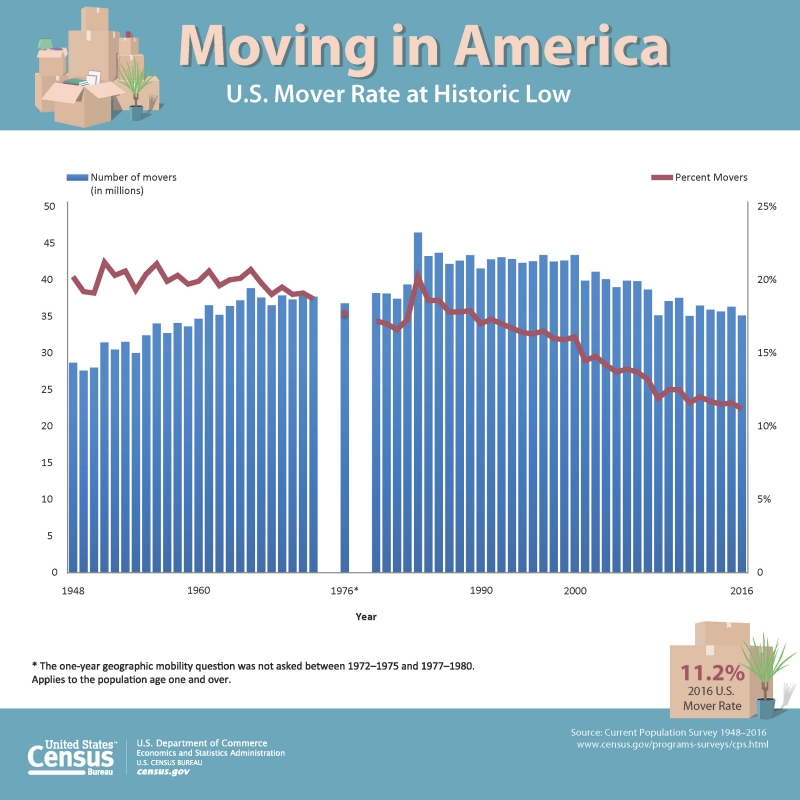
Moving in America: U.S. Mover Rate at Historic Low | Source: U.S. Census Bureau
According to recent results of the U.S. census, there’s actually a relatively small amount of total geographic relocation within the country. 2016 — a year many consider to be one of the most divisive ideologically due to the intense partisanship of the presidential race and, eventually, the election itself and its results — was actually an all-time low for people moving in the country. Furthermore, the stereotype that wealthier people would move more frequently (because they have a greater disposable income and, therefore, more relocation options) is also debunked by the census results. 7% of Americans with an annual income of $100,000 moved between the period of 2012-2013, while 13% of Americans with an annual income of $5,000 moved. As FiveThirtyEight puts it, “sometimes staying put is a sign of stability.”
What all this suggest is that, while ideological beliefs are an important factor in one’s decision to relocate, it might not be the factor that determines the destination. Work is often more likely a bigger player than anything else. Likewise, more studies and research have also revealed that Schelling’s 1960’s model is far too reductive in explaining spontaneous segregation and that the model ignores other more complicated reasons for why people move. These observations show what most of us probably already know but are reluctant to admit: it is much easier and more attractive to believe that people move for ideology — that this is a central piece of the self and we make decisions or form ourselves around it. This is why a show like satirical IFC comedy Portlandia is so popular; it has been able to distill, for comedic effect, this conversation into a simple association game of geography/lifestyle and ideological beliefs. Urban equals liberal; rural equals conservative. Coastal equals liberal; heartland equals conservative. The show’s precise — and, nowadays, prescient — parody has allowed its final season to really subvert expectations about these presumptions on ideology, identity, and locale in an exceptionally clever and nuanced way during this current time of intense polarization.
Portland So White (Portlandia, Season 8) | Source: © IFC/YouTube
We resonate with simple and straightforward answers to incredibly nuanced and complicated problems. But if the world is indeed, as mentioned in the beginning, increasingly more polarized and divided, then we owe it to ourselves and our communities to dedicate our time and energy in not only recognizing the bias for preferring an ideological answer to migration, but coming up with better solutions to solve the issue. Only then can we say we have truly moved.


